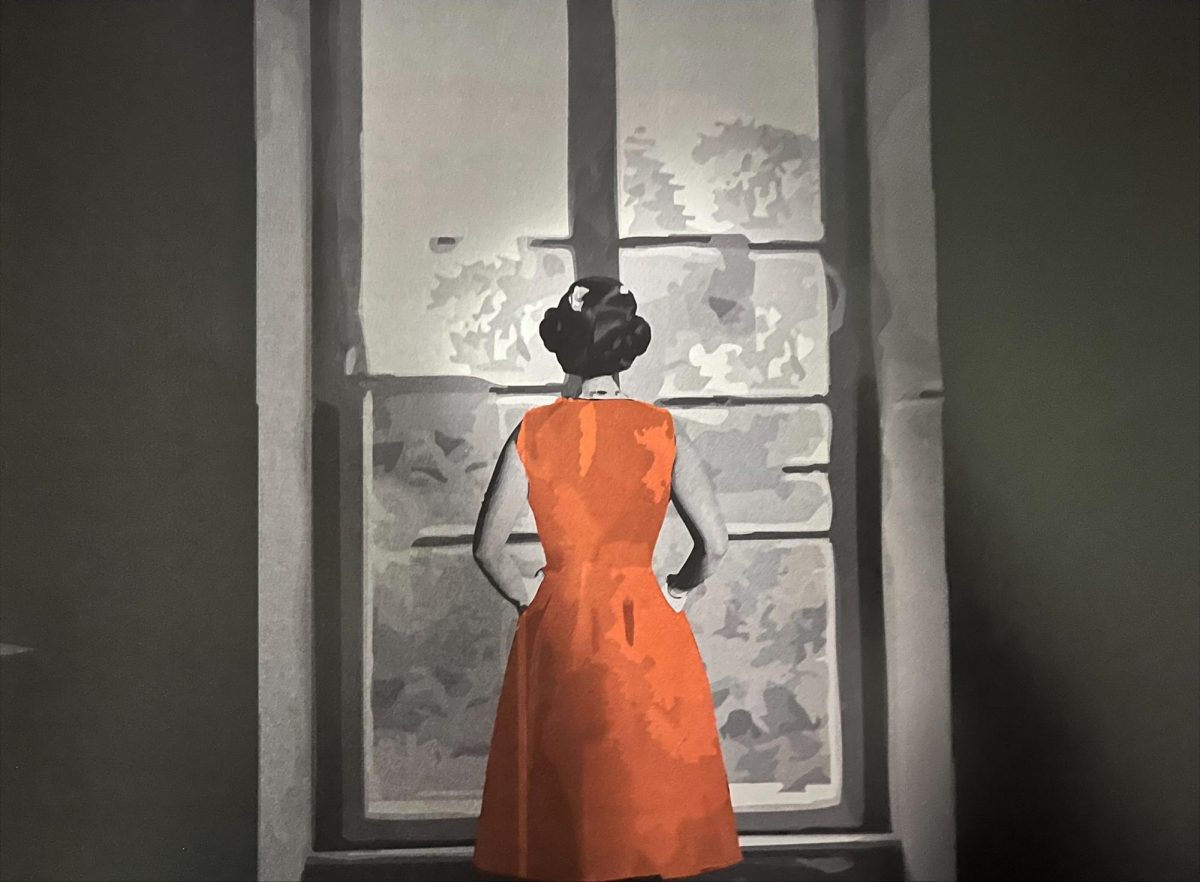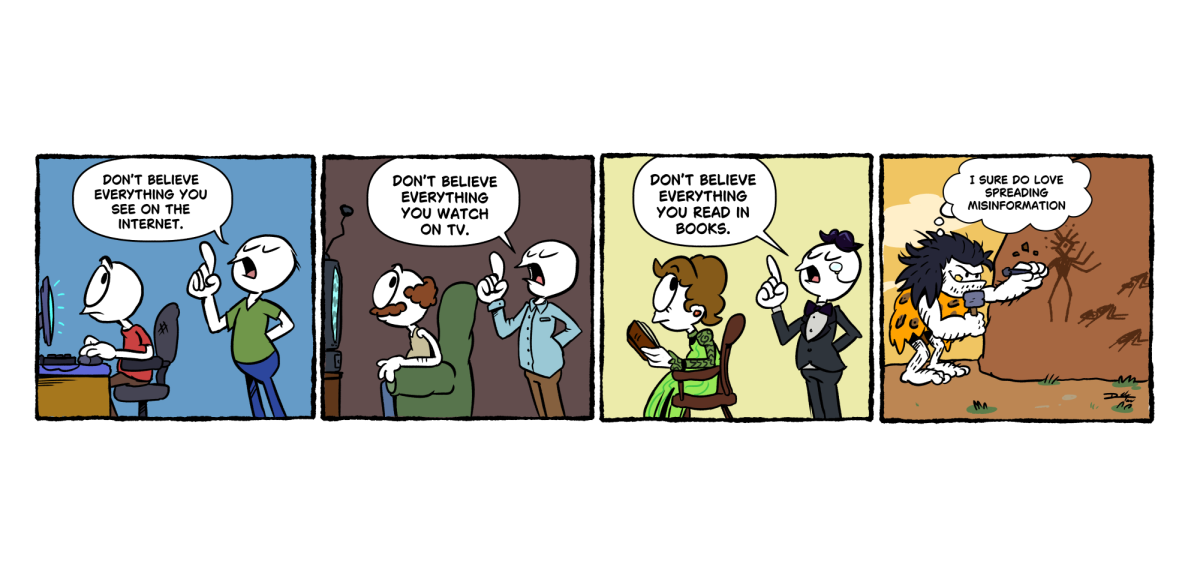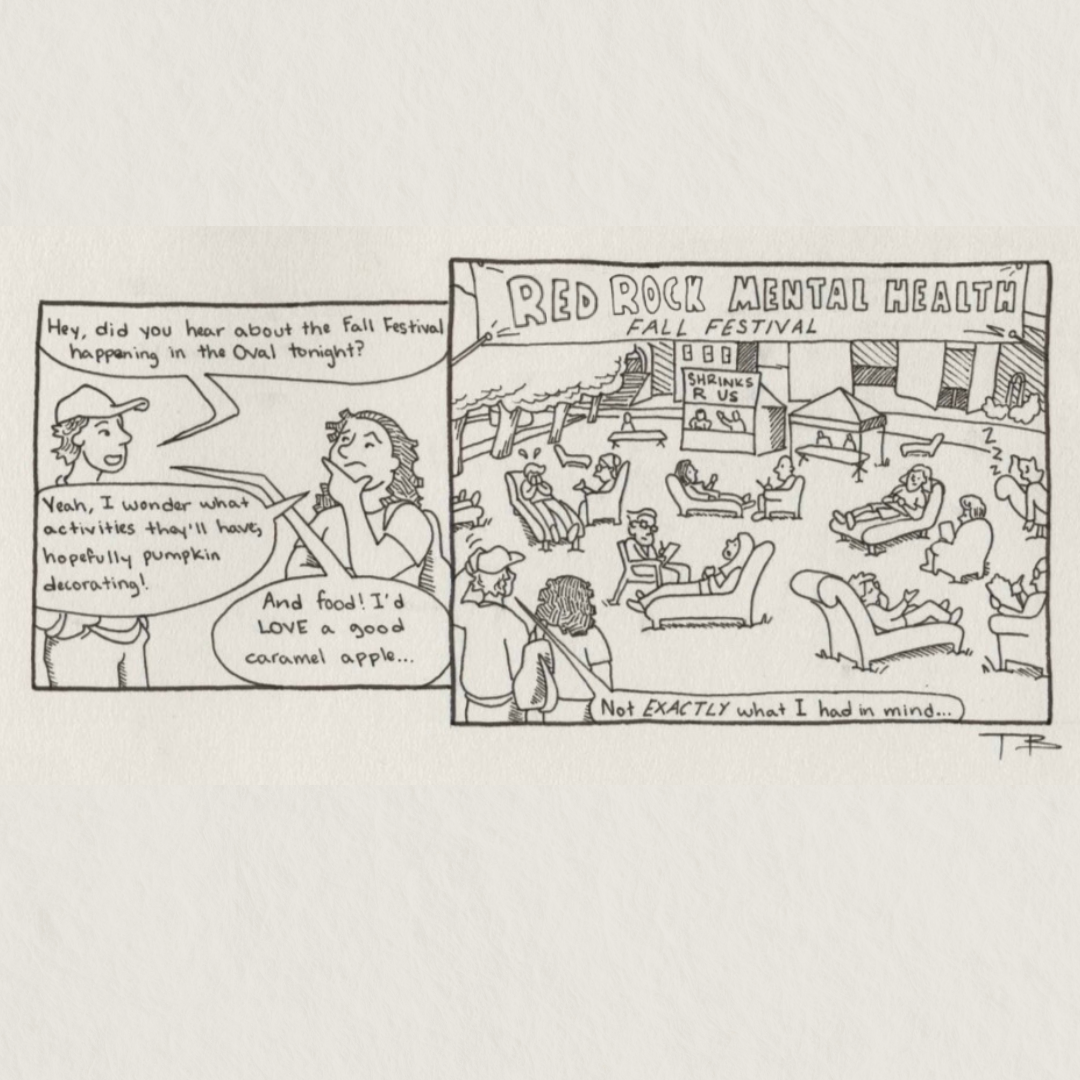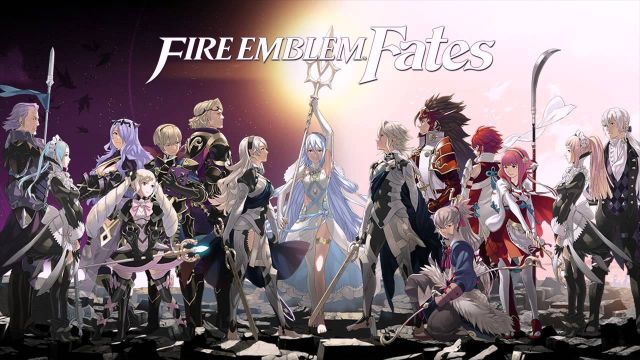Fire Emblem: Fates (Video Game Review)
This photo is a mix of the cover arts for both games. The main character’s adoptive family (Conquest) is on the left, while his/her birth family (Birthright) is featured on the right. The default male and female versions of the main character are shown center-left and center-right of the woman in the middle.
June 10, 2016
Fire Emblem: Fates (FE) is the newest installment of the Fire Emblem series created by Nintendo. The game is only for the Nintendo 3DS handheld system. The FE series itself is comprised of strategy and turn-based games with some story and plot sprinkled in and has been traditionally only available for the Nintendo handhelds. Fates is actually separated into two games: Birthright and Conquest. For the purposes of this review, Conquest is the one that was played. However, to get the full, entire story, both versions of the game should be played.
Conquest and Birthright start off the same, then branch off at Chapter 6. As a young child, the main character (who is fully customizable) is kidnapped by the neighboring feuding kingdom. The child is then raised by [her] captors and develops Stockholm Syndrome, believing they are her family. Once the two kingdoms’ squabbles escalate, they go to war, where the main character meets her birth family outside of battle. At that point, she has to decide whether to side with her birth family (Birthright) or the ones who raised her (Conquest).
The story to Conquest is about 35 hours worth of gameplay, and draws the player in by creating bonds with the other characters. The royal family is tasked by the king to conquer the neighboring kingdom using brutal and sometimes even excessive force. The main character’s siblings reluctantly agree, but the main character stirs up a rebellion amongst them, causing the family to reconsider the king’s actions. Eventually, they make a plan to dethrone him.
Conquest is considered more difficult because the bonds that are formed between neighboring characters while fighting are forged out of necessity, so therefore are weaker and do less damage when units attack together because of the lack of exposure. Birthright grants the opportunity to “scout” more battles to deepen those bonds by spending more time together fighting as well as increase experience points to level up and gold to buy better weapons.
From the bonds that can be created, children can be born and recruited into the army. Generally, the children are much stronger than their parents and can inherit classes and traits. Most of the character development comes from gaining increasing support ranks. These support ranks are leveled C through A+ and up to S if they can marry and have children. Each character can interact with just about every other character, so lots of developments can be made. The more dealings characters have with each other, the higher the support and rankings.
The gameplay is relatively simple. The game is set to more medieval style of weapons, so there are no guns or bombs. While using weapons, each type has an advantage and a disadvantage to other types. Swords and tomes are red and beat out axes and bows that are green, which beat lances and knives that are blue, which beat red weapons. They’re even colored in the menu for quick reference. The only part that may be confusing is that the game doesn’t take the time to teach the player how critical hit percentages are calculated or what the stats on the individual weapons mean.
Each unit takes a turn either moving and attacking or moving and using an item. Units can “Pair Up” to create a two-man unit that is better for defense. Two adjacent units attack together. After all units take their turn, the enemy and ally armies take a turn. Each battle has a goal to be completed whether it be to rout the enemy, defend a space for a certain amount of turns, or defeat the boss. In the classic style of gameplay, if a character dies in battle, he or she is lost to the game permanently, forcing the player to make good tactical decisions.
The art style is typical of the Eastern animation style (anime). Each character is beautifully drawn and has its own distinctive style. In addition to being fully drawn for cut-scenes and talking heads, each character is also pixelated and made into 3-D models that move and attack.
Only a few lines were recorded by voice actors, some of the more famous actors being Matthew Mercer, Stephanie Sheh, and David Stanbra. Cut-scenes are fully voiced, and then some battle cries and general ascensions and dissensions are heard.
Overall, the game has many appealing aspects to it, the main one being a strong strategy game. However, Conquest can be frustrating and very difficult due to the lack of opportunities to gain experience points. Despite being hard, the game is quite enjoyable and I highly recommend it to anyone who wants a strategy challenge, even if he or she hasn’t played a Fire Emblem game before.


















































































